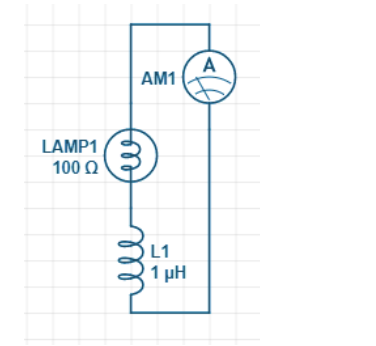
A coil of self-inductance $L$ is being connected in series with a bulb B and an AC source. Brightness of the bulb will get decreased when:
A. Frequency of AC source is decreased.
B. the number of turns in a coil is reduced.
C. a capacitance of reactance ${{X}_{C}}={{X}_{L}}$ is included in the same circuit.
D. an iron metal is inserted in the coil.
Answer
575.4k+ views
- Hint: First of all find out the self-inductance of a coil. And also find the current flowing through the circuit. From this, derive the relation between the increase in current and the self-inductance. These all may help us to solve this question.
Complete step-by-step solution:
First of all let us discuss the concepts of self-inductance. Inductance is given this name because of the property of a component that prevents the variation of current flowing through it. A straight piece of wire can also have some sort of inductance.
The self-inductance of a coil is given by the formula,
$L=\dfrac{{{\mu }_{0}}{{\mu }_{r}}{{N}^{2}}A}{l}$
Where $N$ be the number of turns in the coil, $A$ is the area of the cross section and $l$ is the length of the coil.
The current flowing through the circuit is given as,
$I=\dfrac{E}{{{\left( {{w}^{2}}{{L}^{2}}+{{R}^{2}} \right)}^{\dfrac{1}{2}}}}$
From this expression, we get to know that, as the current in the circuit is decreasing, the self-inductance of the coil increases.
And also the relation which is given as,
$L\propto {{\mu }_{r}}$
As an iron rod is inserted in the metal, the self-inductance will increase and thus the current decreases. And finally the brightness of the bulb decreases. Therefore the correct answer is option D.

Note: Inductors are acting like this by producing a self-induced emf within itself because of their varying magnetic field. The self-inductance of a circuit is calculated in the unit of henries same as that for mutual inductance. It is basically a geometric quantity, which is dependent on the shape of the circuit and number of turns in the circuit. This is not like that of mutual inductances, which can be sometimes positive or negative.
Complete step-by-step solution:
First of all let us discuss the concepts of self-inductance. Inductance is given this name because of the property of a component that prevents the variation of current flowing through it. A straight piece of wire can also have some sort of inductance.
The self-inductance of a coil is given by the formula,
$L=\dfrac{{{\mu }_{0}}{{\mu }_{r}}{{N}^{2}}A}{l}$
Where $N$ be the number of turns in the coil, $A$ is the area of the cross section and $l$ is the length of the coil.
The current flowing through the circuit is given as,
$I=\dfrac{E}{{{\left( {{w}^{2}}{{L}^{2}}+{{R}^{2}} \right)}^{\dfrac{1}{2}}}}$
From this expression, we get to know that, as the current in the circuit is decreasing, the self-inductance of the coil increases.
And also the relation which is given as,
$L\propto {{\mu }_{r}}$
As an iron rod is inserted in the metal, the self-inductance will increase and thus the current decreases. And finally the brightness of the bulb decreases. Therefore the correct answer is option D.

Note: Inductors are acting like this by producing a self-induced emf within itself because of their varying magnetic field. The self-inductance of a circuit is calculated in the unit of henries same as that for mutual inductance. It is basically a geometric quantity, which is dependent on the shape of the circuit and number of turns in the circuit. This is not like that of mutual inductances, which can be sometimes positive or negative.
Recently Updated Pages
Why are manures considered better than fertilizers class 11 biology CBSE

Find the coordinates of the midpoint of the line segment class 11 maths CBSE

Distinguish between static friction limiting friction class 11 physics CBSE

The Chairman of the constituent Assembly was A Jawaharlal class 11 social science CBSE

The first National Commission on Labour NCL submitted class 11 social science CBSE

Number of all subshell of n + l 7 is A 4 B 5 C 6 D class 11 chemistry CBSE

Trending doubts
What is meant by exothermic and endothermic reactions class 11 chemistry CBSE

10 examples of friction in our daily life

One Metric ton is equal to kg A 10000 B 1000 C 100 class 11 physics CBSE

1 Quintal is equal to a 110 kg b 10 kg c 100kg d 1000 class 11 physics CBSE

Difference Between Prokaryotic Cells and Eukaryotic Cells

What are Quantum numbers Explain the quantum number class 11 chemistry CBSE




